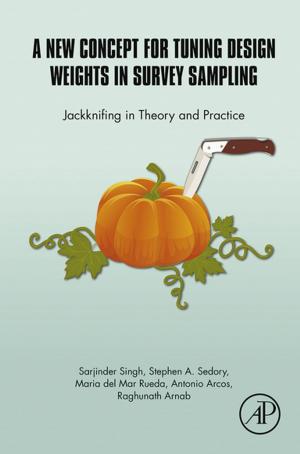Origins of Human Innovation and Creativity
Nonfiction, Science & Nature, Science, Earth Sciences, Geology, History| Author: | Scott Elias | ISBN: | 9780444538222 |
| Publisher: | Elsevier Science | Publication: | December 31, 2012 |
| Imprint: | Elsevier | Language: | English |
| Author: | Scott Elias |
| ISBN: | 9780444538222 |
| Publisher: | Elsevier Science |
| Publication: | December 31, 2012 |
| Imprint: | Elsevier |
| Language: | English |
Innovation and creativity are two of the key characteristics that distinguish cultural transmission from biological transmission. This book explores a number of questions concerning the nature and timing of the origins of human creativity. What were the driving factors in the development of new technologies? What caused the stasis in stone tool technological innovation in the Early Pleistocene? Were there specific regions and episodes of enhanced technological development, or did it occur at a steady pace where ancestral humans lived? The authors are archaeologists who address these questions, armed with data from ancient artefacts such as shell beads used as jewelry, primitive musical instruments, and sophisticated techniques required to fashion certain kinds of stone into tools.
Providing ‘state of art’ discussions that step back from the usual archaeological publications that focus mainly on individual site discoveries, this book presents the full picture on how and why creativity in Middle to Late Pleistocene archeology/anthropology evolved.
- Gives a full, original and multidisciplinary perspective on how and why creativity evolved in the Middle to Late Pleistocene
- Enhances our understanding of the big leaps forward in creativity at certain times
- Assesses the intellectual creativity of Homo erectus, H. neanderthalensis, and H. sapiens via their artefacts
Innovation and creativity are two of the key characteristics that distinguish cultural transmission from biological transmission. This book explores a number of questions concerning the nature and timing of the origins of human creativity. What were the driving factors in the development of new technologies? What caused the stasis in stone tool technological innovation in the Early Pleistocene? Were there specific regions and episodes of enhanced technological development, or did it occur at a steady pace where ancestral humans lived? The authors are archaeologists who address these questions, armed with data from ancient artefacts such as shell beads used as jewelry, primitive musical instruments, and sophisticated techniques required to fashion certain kinds of stone into tools.
Providing ‘state of art’ discussions that step back from the usual archaeological publications that focus mainly on individual site discoveries, this book presents the full picture on how and why creativity in Middle to Late Pleistocene archeology/anthropology evolved.
- Gives a full, original and multidisciplinary perspective on how and why creativity evolved in the Middle to Late Pleistocene
- Enhances our understanding of the big leaps forward in creativity at certain times
- Assesses the intellectual creativity of Homo erectus, H. neanderthalensis, and H. sapiens via their artefacts















